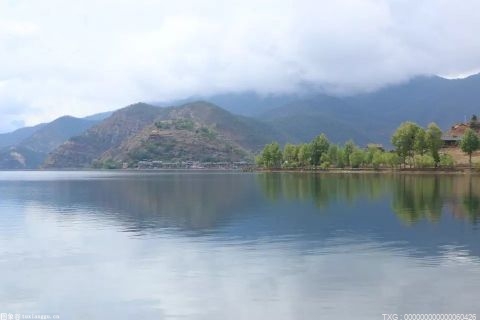What is a vertical farm? What are the functions of vertical farms?

You may also be interested in:
-
What is a vertical farm? What are the functions of vertical farms? -
Is it unnecessary for individual candidates to take the college entrance examination? After single admission, you can -
What are pharmaceutical intermediates? Classification of pharmaceutical intermediates -
What is smart energy? Is science and technology the driving force of smart energy? -
What is smart medicine? The market scale of smart medicine is -
What are the good brands of water dispensers? Domestic water dispenser -
Why can't the money of Yu'e Bao be transferred out? Why not -
What is Fourier's law of heat conduction? Fourier's law
Today's Hot Spots
Recommended for you
The Ningxia Forestry and Grass Bureau can fully realize the whole network office
more
-
Focus on these two sectors or take the lead in breaking through after the major conference, and make a great contribution to the 23rd anniversary of the success of Barry -
Juhuasuan 99 Huasuan Festival content upgrading 5000 Taobao Tmall brands linkage carnival -
Innovation and change, transformation and strive to create close to the needs of the people, with temperature and responsibility -
Escort Beijing Life Insurance Co., Ltd. and the fifth batch of youth aid cadres and talents -
China Business CDP White Paper | Love Analysis Report -
I Love My Home Volunteer Service Team: Promote the Anti epidemic Spirit and Protect Community Peace -
Lianhua Qingwen, a traditional Chinese medicine, becomes a powerful weapon against the Omicron virus -
Lansheng Capital Liu Jun: Six Stages of the Growth of Stock Investors
more
-
Direct and fast access to livelihood funds (new economic orientation) -
Global highlights today! Multi regional planning for the construction of major economic projects in 2023 is still the focus -
Global view: high-quality investment promotes economic recovery -
New news every day: The Ministry of Industry and Information Technology announced the list of 45 national advanced manufacturing clusters, leading industries -
How long will the commercial loan be released after being transferred to provident fund loan? Here comes the response -
Global Today News! Liu Shijin: The investment structure has changed in recent two years. Manufacturing, infrastructure -
Six departments: further strengthen support for the delay of repayment of principal and interest of loans to small and micro enterprises -
Hot Online | The epidemic and real estate conflict are easing China's economy is about to enter a recovery period
Ranking
-
Jiangxi Jinxian: The hot work of the "West East Gas Transmission" natural gas pipeline of the national pipeline network was successfully implemented -
On May 23, the brine concept rose, led by Tibet Everest, Jiuwu High tech, etc -
What are the leading companies of listed companies related to bittern food? Juewei Food's share price dropped by - 46.12% in 2022 -
Boxi Oil and Gas Treatment Plant delivers more than 4 billion cubic meters of natural gas for Tianjin -
The concept of lightweight materials rose, led by Nanshan Aluminum, Mingtai Aluminum, etc -
The Ministry of Finance and the State Administration of Taxation: refund the stock tax credit of large enterprises in advance -
On May 20, the concept of lightweight materials rose, led by Chinalco and Mingtai Aluminum -
What are the leading stocks of agricultural pump concept? Tianshan Aluminum's share price rose 8.42% in the past seven trading days -
What are the solar thermal power generation concept stocks in 2022? Xizi Jieneng's share price rose 2.71% in 5 days -
The task of maintaining stable supply and price is arduous
Wonderful push
-
What is a vertical farm? What are the functions of vertical farms? -
Is it unnecessary for individual candidates to take the college entrance examination? Can I change my major after single admission? -
Direct and fast access to livelihood funds (new economic orientation) -
Current news: people's livelihood fund direct express (new economic orientation) -
Global highlights today! Multi regional planning for the construction of major economic projects in 2023 is still the focus -
Global view: high-quality investment promotes economic recovery -
Global news: high-quality investment promotes economic recovery -
Multi regional planning for the construction of major economic projects in 2023 is still the focus -
With the pursuit of perfection, Qinghualang is increasingly scarce and its future value space is promising -
New news every day: The Ministry of Industry and Information Technology announced the list of 45 national advanced manufacturing clusters, leading industries -
Hot: The Ministry of Industry and Information Technology announced the list of 45 national advanced manufacturing clusters, leading industrial output value -
Daily video: How long will the commercial loan be released after being converted into provident fund loan? Here comes the response -
How long will the commercial loan be released after being transferred to provident fund loan? Here comes the response -
Global Today News! Liu Shijin: The investment structure has changed in recent two years. Manufacturing, infrastructure -
Global micro trends | Liu Shijin: The investment structure has changed in the past two years. Manufacturing, infrastructure -
Six departments: further strengthen support for the delay of repayment of principal and interest of loans to small and micro enterprises -
Six departments: further strengthen support for the delay of repayment of principal and interest of loans to small and micro enterprises -
Hot Online | The epidemic and real estate conflict are easing China's economy is about to enter a recovery period -
Information: National Bureau of Disease Control and Prevention: focus on promoting and improving the vaccination rate of people over 80 years old -
World view: 260 million old people, how to provide for them? -
The epidemic situation and the contradiction between real estate are easing. China's economy is about to enter a recovery period -
National Bureau of Disease Control and Prevention: focus on promoting and improving the vaccination rate of the elderly over 80 years old -
Grasp the peak consumption season at the end of the year and issue new round of consumption vouchers intensively in many places -
Current quick look: seize the peak consumption season at the end of the year to intensively issue new round of consumption vouchers -
Daily News: Four departments take action! Standardize the use of the word "bank" -
Four departments! Standardize the use of the word "bank" -
Global real-time: statistics on environmental protection of member enterprises in October -
Daily news | October statistics on environmental protection of member enterprises -
Xie Zhenhua: Facing the challenge of climate change, adhering to multilateralism and win-win cooperation is the only choice -
Global WeChat News: Deputy Director General of WTO Bogan Emphasizes Strengthening Cooperation to Resolve the Food Crisis -
Deputy Director General of WTO Bogan stressed strengthening cooperation to resolve the food crisis -
Xie Zhenhua: Facing the challenge of climate change, adhering to multilateralism and win-win cooperation is the only choice -
Director General of WTO Iveira repeatedly stressed the important role of trade in climate change at COP27 -
Hot every day: World Trade Organization Director General Iveira has repeatedly stressed trade versus climate on COP27 -
Current quick look: focus on the global economic recovery and digital financial regulation -
CBRC: make clear regulations on prudent operation and supervision of off balance sheet business of commercial banks -
CBRC: make clear regulations on prudent operation and supervision of off balance sheet business of commercial banks -
Ministry of Commerce: China's service import and export increased by 17.2% year-on-year in the first 10 months -
National Development and Reform Commission: At present, it is the key time to consolidate the economic stability and upward foundation -
Focus observation: Ministry of Commerce: China's service import and export increased by 17.2% year-on-year in the first 10 months -
World focus: National Development and Reform Commission: The key moment to consolidate the economic stability and upward foundation is now -
Global Communications! In the first 10 months, the total operating revenue of state-owned enterprises increased by 8.9% year on year, and the total profit decreased by 3.3% -
Daily news: In the first 10 months, the total operating revenue of state-owned enterprises increased by 8.9% year on year, and the total profit decreased by 3.3% -
Global hot recommendation: look ahead to investment trends | join hands with Luoyang Office in Shenzhen to lead ZTE New Materials -
Current broadcast: Yi Gang's voice is heavy on inflation and monetary policy -
Instant: 14 departments issue guidance, camping economy press the "accelerator" button for development -
On inflation and monetary policy, Yi Gang made a big statement -
Daily report: National Development and Reform Commission solidly carries out the construction of government data resource system -
[Daily News] National Development and Reform Commission solidly carries out the construction of government data resource system -
14 The department issued guidance, and the camping economy pressed the "acceleration key" for development -
Focus bulletin! Ministry of Finance: From January to October, the total operating revenue of state-owned enterprises kept growing year on year -
Global Today News | "Industry Upgrades" Move Space for Manufacturing -
Hot! The Prospective Economist's Industry Observer Ranking List was released (the third issue) -
The latest news: "industrial upstairs" make room for manufacturing -
Focus SMS! Ministry of Finance: From January to October, the total operating revenue of state-owned enterprises kept growing year on year -
What is the ETF issuance mechanism? What are the characteristics and functions of ETF ETF funds? -
What is the sea of wisdom? How to build the ocean big data cloud platform? -
What is inclusive childcare service? What are the characteristics of inclusive childcare services? -
What is biological breeding? What does biological breeding technology include? -
What is small molecule innovative medicine? What is the difference between small molecule innovative drugs and macromolecular biological drugs? -
What is the new generation of information technology industry? What is the new generation information technology industry policy? -
Narrow band IoT? What is the difference between narrowband IoT and NB IoT? -
What is distributed storage? What is the difference between distributed storage and traditional storage? -
What are pharmaceutical intermediates? How are pharmaceutical intermediates classified? -
What is smart energy? Is science and technology the driving force of smart energy? -
What is smart medicine? How large is the market scale of smart medicine? -
Snowe Mining shares auction 7 days four times circuit breaker mysterious bidder increased price by 196 million yuan strong capping -
The total import and export volume of services in the first 10 months increased by 17.2% year on year -
International experience in the development of "specialized, special and new" enterprises -
Snowe Mining shares auction 7 days four times circuit breaker mysterious bidder increased price by 196 million yuan strong capping -
Quick information: self-employed businesses can do something in the field of political procurement -
Current focus: international experience in the development of "specialized, special and new" enterprises -
Focus message! The total import and export volume of services in the first 10 months increased by 17.2% year on year -
World Top: "Goalkeeper" Becomes "Forward" Organization to Enhance Combination Offensiveness -
Global Communications! Individual businesses can do something in the field of government procurement -
[Broadcast information] Will the "independence" of the 17 independent directors who have completed their shareholding increase this year be affected -
Express: Business pension does not enjoy personal tax preference -
Daily message! Beijing and other 10 provinces and cities will pilot commercial pension business -
Message! "Goalkeeper" to "Forward" Mechanism to Enhance Combined Offensiveness -
Business pension does not enjoy personal tax preference -
The central bank's month end reverse repo efforts increased - releasing positive signals to the market -
[World News] Beijing and other 10 provinces and cities will pilot commercial pension business -
World WeChat News: The central bank's reverse repo efforts increased at the end of the month - releasing positive signals to the market -
Strong support for fiscal expenditure No obvious gap in liquidity in December -
Strong support for fiscal expenditure No obvious gap in liquidity in December -
The list of top 100 cities in advanced manufacturing industry was released, and multiple measures were taken to promote the rapid and healthy development of advanced manufacturing industry -
Zhao Lijian said that China has made great efforts to ensure the stability of the global supply chain and promote the development of the world economy -
Daily News: Zhao Lijian said that in order to ensure the stability of the global production and supply chain and promote the world economy -
The list of the world's top 100 cities in advanced manufacturing industry has been released, and various measures have been taken to promote advanced manufacturing -
Viewpoint: The Ministry of Industry and Information Technology announced the list of advanced manufacturing clusters in 45 countries based on regional comparison -
Daily quick look: the Ministry of Industry and Information Technology announced the list of 45 national advanced manufacturing clusters based on the region -
Daily broadcast! Development and Reform Commissions all over the country work together to expand effective investment and stabilize the overall economy -
Colorectal cancer: I'm afraid you eat these foods! -
Know everything every day! Headline of prospective IPO: 2 times 2, Huilong Piston successfully passed the meeting! Diligence Resources -
Daily news: the last nail is being nailed on the "coffin board" of fuel vehicles -
Daily communication! The Ministry of Industry and Information Technology announced the list of 45 national advanced manufacturing clusters Beijing Tianjin Hebei Life -
Development and Reform Commissions all over the country work together to expand effective investment and stabilize the overall economy -
World news: The Ministry of Industry and Information Technology announced the list of 45 national advanced manufacturing clusters -
News: Ministry of Commerce: China's total service import and export in the first 10 months increased by 17.2% year-on-year to 4918.55 billion yuan -
Current speed reading: This change in the female brain during pregnancy may affect the mother baby relationship!
this Daily news
-
What is a vertical farm? What are the functions of vertical farms? -
Is it unnecessary for individual candidates to take the college entrance examination? Can I change my major after single admission? -
What are pharmaceutical intermediates? How are pharmaceutical intermediates classified? -
What is smart energy? Is science and technology the driving force of smart energy? -
What is smart medicine? How large is the market scale of smart medicine? -
What are the good brands of water dispensers? How much is a household water dispenser? -
Why can't the money of Yu'e Bao be transferred out? Why can't I transfer out in real time? -
What is Fourier's law of heat conduction? Is Fourier's law the basic law? -
Can we borrow money from WeChat micro loan? Is the interest rate for borrowing money high? -
How to check personal credit? How to judge the query results?







